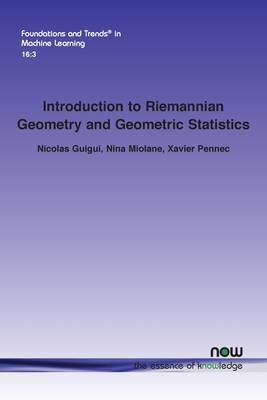
- Afhalen na 1 uur in een winkel met voorraad
- Gratis thuislevering in België vanaf € 30
- Ruim aanbod met 7 miljoen producten
- Afhalen na 1 uur in een winkel met voorraad
- Gratis thuislevering in België vanaf € 30
- Ruim aanbod met 7 miljoen producten
Zoeken
Introduction to Riemannian Geometry and Geometric Statistics
From Basic Theory to Implementation with Geomstats
Nicolas Guigui, Nina Miolane, Xavier Pennec
€ 134,45
+ 268 punten
Omschrijving
As data is a predominant resource in applications, Riemannian geometry is a natural framework to model and unify complex nonlinear sources of data. However, the development of computational tools from the basic theory of Riemannian geometry is laborious. In this monograph the authors present a self-contained exposition of the basic concepts of Riemannian geometry from a computational viewpoint, providing illustrations and examples at each step. They proceed to demonstrate how these concepts are implemented in the open-source project Geomstats, explaining the choices that were made and the conventions chosen. The reader thus learns in one self-contained volume the theory of Riemann geometry and geometric statistics and their implementation to perform statistics and machine learning on manifolds. Containing many practical Python examples, this monograph is a valuable resource both for mathematicians and applied scientists to learn the theory of Riemann geometry and its use in practice implemented with the Geomstats package where most of the difficulties are hidden under high-level functions.
Specificaties
Betrokkenen
- Auteur(s):
- Uitgeverij:
Inhoud
- Aantal bladzijden:
- 182
- Taal:
- Engels
- Reeks:
Eigenschappen
- Productcode (EAN):
- 9781638281542
- Verschijningsdatum:
- 22/02/2023
- Uitvoering:
- Paperback
- Formaat:
- Trade paperback (VS)
- Afmetingen:
- 156 mm x 234 mm
- Gewicht:
- 267 g

Alleen bij Standaard Boekhandel
+ 268 punten op je klantenkaart van Standaard Boekhandel
Beoordelingen
We publiceren alleen reviews die voldoen aan de voorwaarden voor reviews. Bekijk onze voorwaarden voor reviews.











